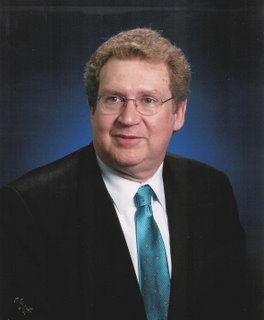History of the Restoration Movement
Below is an article that appeared in the Indianapolis Star newspaper on January 20, 2007 entitled:
Rewriting History, Finding Reconciliation
3 Christian denominations hope that creating 1 version of splintering will heal misunderstandings
By Robert King
January 20, 2007
Church historians from across the country convened in Indianapolis last week to start a monumental task: rewriting nearly 150 years of American religious history.
Their goal is to agree upon a single history that describes a 19th-century movement that tried to break down denominational walls but splintered itself into what became the Churches of Christ, the Christian Church (Disciples of Christ) and the Independent Christian Churches.
Historians representing each of the branches hope a new version of the story that incorporates all three perspectives would do much to help heal lingering differences.
"We share a history in which each group has written their own account,"
said Newell Williams, a professor at Brite Divinity School, a Disciples school in Texas. "Of course, in those, whichever group is writing is the good guy and the other people are the bad guys." The three strains that spawned from what is known as the Stone-Campbell Movement today represent more than 4 million American Christians, including some of the largest churches in the Indianapolis area and the Disciples denomination, whose world headquarters is Downtown.
The scholars involved in the project, which could take six years to complete, hope a more balanced and rounded telling of their history could heal misunderstandings and end the occasional animosity that followed after the groups began to split in the 1870s.
"We are not just throwing it out there as another piece of history writing," said Paul Blowers, an Emmanuel School of Religion professor representing the Independents. "We do have an agenda. We want our churches to get to know each other across the divisions." Blowers'
father, Russell, was the longtime pastor at East 91st Street Christian Church.
"We want people to begin to own responsibility again for Christian reconciliation."
The three groups span the theological spectrum, from the conservative Churches of Christ to the more liberal-leaning Disciples. So the scholars say that if they can succeed in bridging differences, it could offer hope for the larger fracturing of the Protestant landscape.
Breaking off
The Stone-Campbell Movement, named for its founders, arose in the early 1800s out of concern that denominational divisions were hindering the spread of the Christian Gospel.
Its devotees sought to unite around the practices of the early church, as outlined in the New Testament. They practiced baptism by immersion and took Communion each Sunday but rejected the creeds and confessions developed by the denominations. The use of "Christ" and "Christian" in their modern names is a legacy of that effort at essential Christianity.
Williams said the movement, centered mostly in the border states, grew to more than 20,000 members in 1832 and eventually spread to England and Australia.
But by the 1870s, a faction of the movement of mostly Southern churches raised objections to the use of instrumental music in worship and began to break away. By 1906, this group was recognized as the Churches of Christ, whose worship services are still devoid of instruments.
In the 1920s, the remaining groups divided over the issue of baptism.
The group that became the Christian Church (Disciples of Christ) wanted to accept believers who came from other churches but had not been immersed. The group that became the Independent Christian Church stuck to its practice of total immersion. And those differences hold today.
Today, there are 65 Disciples churches within 30 miles of Downtown Indianapolis. And several of the largest churches in the community -- East 91st Street, Traders Point Christian and Mount Pleasant Christian
-- fall under the Independent Christian Churches umbrella.
The epicenter of this history project is the Disciples-affiliated Christian Theological Seminary, on the Northside. The historians are scheduled to meet for "writers conferences" two more times in the coming years. And Scott Seay, an assistant professor of church history at the seminary, is the managing editor who will try to pull it all together.
The historians, most of whom were strangers, came together for the first time in a church service where they took Communion -- a sacrament all hold dear.
Respecting the different worship styles, the service featured segments with instrumental music and segments of only a cappella singing.
The scholars say worshipping and working together have helped them see the folly of some of the squabbles their groups have had. "It is a step to break down the barriers of misunderstanding, mistrust and sometimes even condemnation," said Doug Foster, a professor at Churches of Christ-affiliated Abilene Christian University in Texas.
None expects its history book to bring about an organizational merger.
But they hope the new history text -- and their example of a united fellowship -- can revive more of the unity that spawned the movement to begin with.
"When our churches read their account, hopefully it will help them, as it is helping us, to no longer demonize or discount or write off the other party," said Williams, the Disciples historian. "The big goal is to let God do with this what God wishes to do."


0 Comments:
Post a Comment
<< Home